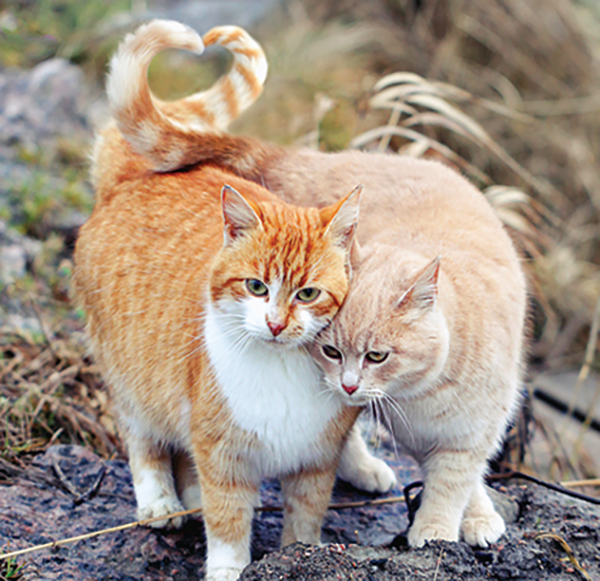
Photo onemchinowa | iStock Photo
Cats are sometimes considered mysterious, inscrutable creatures. But, if you carefully observe body language, cats are quite open with their behavior, especially through the tail. Learning to read a cat’s tail “language” can help you to have a better bond with your feline companion.
Our descriptions give you generalizations about tail postures, but you need to know your own cat’s normal. You may find a variation! Many longhair cats with tails heavy with hair may tend to carry their tails lower normally. Obviously, a cat with a kinked tail or a previously injured tail may have unique tail postures. Bob tail or Manx cat owners need to rely on other body language signals since the tail or stub is no help.
Context is also important in reading your cat’s tail. If your cat is outside and spots a strange cat approaching, she may head off with tail high and confident. In that case, that tail posture could indicate a willingness to defend her territory and switch to aggression rapidly.
A cat doing a stretch can look just like a cat with the whole-body puff and arched back. The difference is the piloerection, which means her hair is standing on end, and her overall appearance.
Evaluate your cat’s overall posture. A calm, happy cat is relaxed, often walking around. If your cat is crouched, she is maybe fearful, planning to launch an attack, or at least highly concerned.
Learn more about feline body language as it pertains to aggression at the Cornell Feline Health Center website: tinyurl.com/CornellFECBeh.
Tail Language: Common Signs That Indicate Your Cat’s Current Emotions
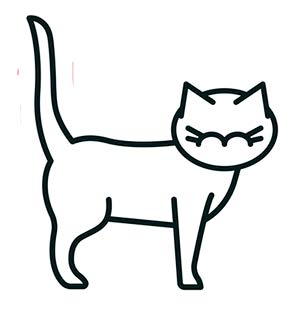
Upright and Straight. A cat strutting through the room with her tail held upright and straight tends to be a confident cat. All is well in her world. If that tail is upright but shaking or vibrating, it is usually a sign of good will as well. Many cats will combine the tail quiver with a head butt when they greet a favorite person. Male cats will often do a tail quiver right before or as part of urine marking.
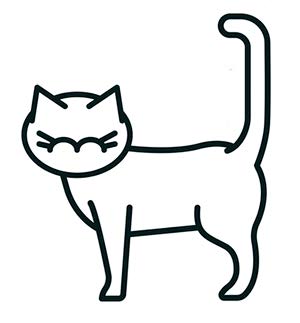
Bend at the Top. If that tail has a bend at the top (not counting a natural kink), she is in a friendly mood and open to your attention. This tail posture can signal “time for play” in some cats, so take advantage of that playful mood!
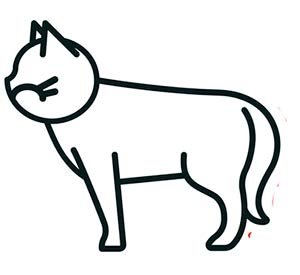
Tail Down. Beware the cat with her tail held down. She is likely to be agitated and nervous about something. This could flick over to aggression easily. Best to walk on by and not try to interact.

Down and Tucked. If the tail is down and tucked tightly underneath her, this is a very scared cat. She might act aggressively out of pure fear. Be prepared for a hiss, swat, or yowl.
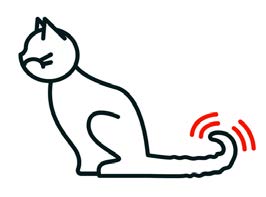
Flicking or Whipping. A low flicking movement of the tip back and forth tends to indicate annoyance. This is similar to a low wag of the whole tail. Your cat is irritated. A tail whipping back and forth is a true danger sign. This cat may be torn between anger and fear but either way, this is not the time for cuddling and human cat bonding. Sometimes a cat will do a lazy tail twitch when she is napping. Whether she is dreaming or simply half awake and content is not known, but this is usually a benign tail sign.
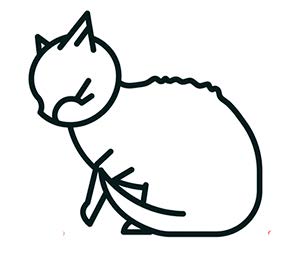
Tucked Tail. Sitting erect with her tail tucked around her body can be a content cat, or a slightly concerned cat. This is a case where you should look at other body language for help. If her ears are flattened at all or her pupils are dilated, pass on by, carefully. If she is sitting calmly all is fine.
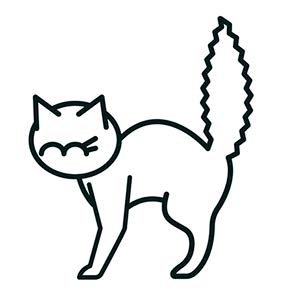
Puffed Tail. A puffed tail often comes with a whole body “puff” and often an arched back. This cat, or kitten, is about to explode. It may be a harmless flip into zoom mode or it could be a prelude to an attack. Walk on by very carefully or even change your route. Cats puff their hair up to look bigger. They hope that the increased size, often combined with a hiss or swat, will dissuade anyone thinking of attacking or bothering them.
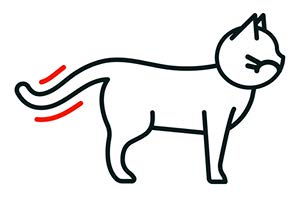
Straight, with Slow Movements. A tail out straight and slowly moving back and forth is often a cat that is concentrating. Outdoors, she may be focused right before a pounce on prey. This can happen indoors too, if she is about to launch herself onto a toy or another family pet. A cat sitting on the windowsill bird watching may have similar tail movements.
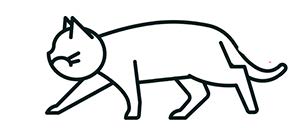
Relaxed. Relaxed cats will often carry their tails straight out behind, but not stiff. Their whole posture will indicate that they are comfortable with their surroundings.



